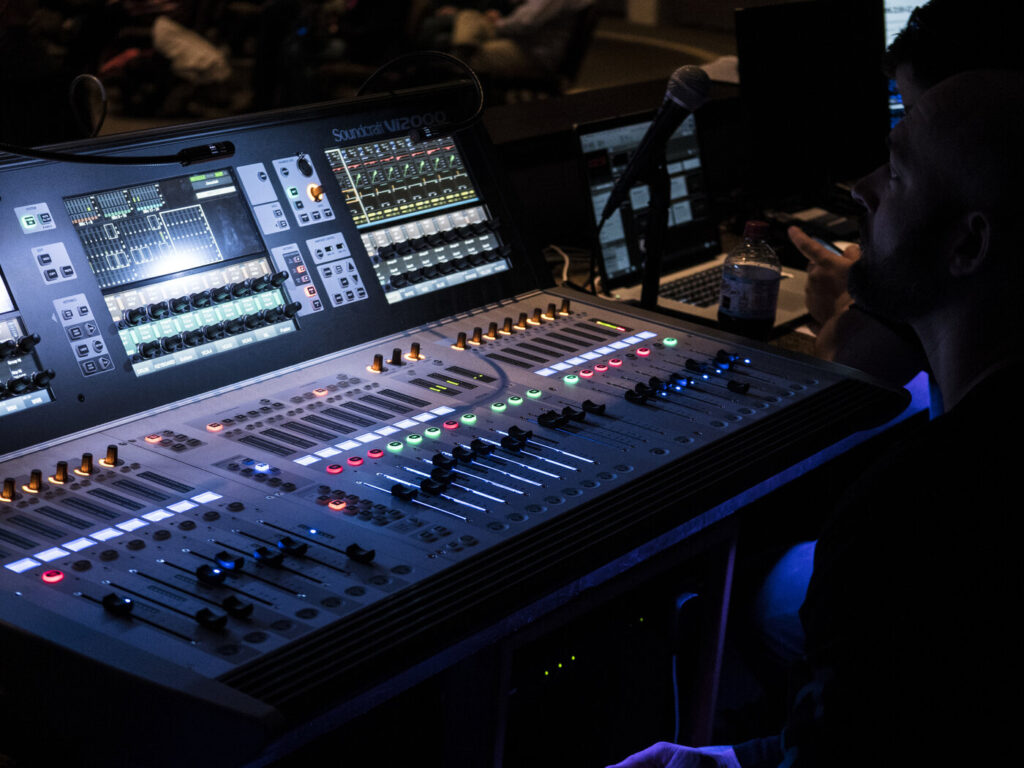For churches that have limited funds to bring in acoustical engineers or sound designers, there are still ways to improve the acoustic quality of their worship space. With some creativity and effort, churches can achieve better sound without breaking the bank.
This article will address the most common acoustic issues encountered in places of worship. You will also pick up helpful knowledge regarding potential solutions that can be utilized by church staff to improve the sound quality of the space.
Unclear Sound
The acoustics in older churches were designed for traditional, non-amplified sound. This means that the sound produced in these spaces is often unclear when it comes to amplified music and speech. This is a common issue in older churches that were made for singing and worship services.
Installing acoustic foam panels in key areas of the room makes it possible to reduce the amount of reverberation and reflections from higher frequencies. There is a wide selection of sizes to suit different room designs and layouts. These foam panels are easy to install with adhesive backing or by mounting them on tracks.
These panels can be hung from ceiling rafters, mounted on tracks similar to acoustic curtains, or even placed in portable frames, making them more convenient for those who want to control sound in their space.
Hard Surfaces
Hard flooring and seating surfaces can cause sound to bounce and echo throughout a room. This is because these surfaces have an acoustic reflectivity, meaning sound waves are reflected off them. As a result, the space can become filled with sound reverberations.
To reduce sound reflections in churches, replace hard flooring with carpet runners, padded chairs, and vinyl flooring with acoustic underlayment. These materials are thicker, more padded, and absorb sound better than laminate and concrete. This will create a better acoustic environment in the church.
Noise Pollution
Noise pollution from mechanical equipment and ducts can cause loud and disruptive vibrations, which can interfere with the sound system. Fans can also cause a lot of noise, increasing the overall level of noise in the room, making it necessary to turn up the sound system to be heard.
Sound diffusers help improve the acoustics in a room by dispersing sound waves instead of allowing them to be reflected off of the walls, resulting in a lack of echoing reverberation. Diffuser panels can absorb mid-frequency and high-frequency sound waves, while bass traps are better at absorbing low-frequency sound waves, which can build up in corners and cause standing waves.
Conclusion
Acoustics in churches should be taken seriously as it directly affects the sound quality inside. An acoustically designed church should consider reverberation time, sound clarity, and sound level. The first step to improving the acoustics in a church is to assess the current acoustic conditions. This could include measuring reverberation times and sound levels.
Finally, it is crucial to remember that acoustic treatments require regular maintenance and should be checked every few years for optimal sound quality. Taking these steps to improve the acoustics in a church will help ensure that the congregation can enjoy a better sound experience.
Do you need audio-video systems for churches? Check out Messenger AVL. Underperforming worship technology limits your creative ability. At MessengerAVL, we design and install audio, video, and lighting solutions so your technical dreams become a reality. Schedule a call!



